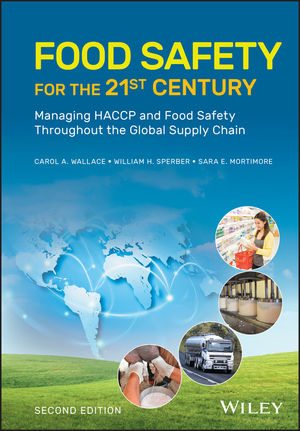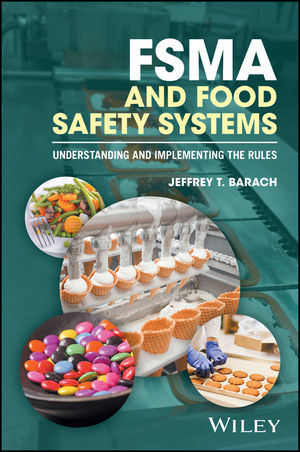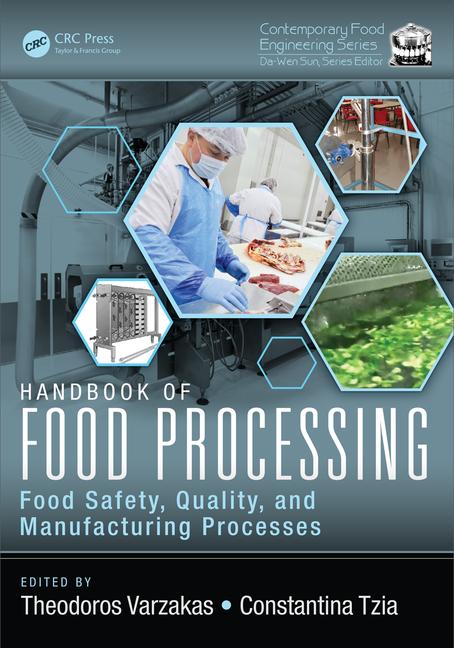Assessing the Safety of Food Contact Substances

The Office of Food Additive Safety (OFAS) at the U.S. Food and Drug Administration’s (FDA) Center for Food Safety and Applied Nutrition (CFSAN) is charged with, among other responsibilities, regulating industry to ensure that food contact substances are safe. The term “food contact substance” (FCS) is defined in Section 409(h)(6) of the Federal Food, Drug, and Cosmetic Act as “any substance intended for use as a component of materials used in manufacturing, packing, packaging, transporting, or holding food if such use is not intended to have any technical effect in such food.” Examples of food contact substances include polymers (plastic packaging materials), pigments and antioxidants used in polymers, can coatings, adhesives, materials used during the manufacture of paper and paperboard, slimicides and biocides (antimicrobial agents), and sealants for lids and caps.
The term “safe,” as it refers to food additives and ingredients (including food contact substances), is defined in 21 CFR 170.3(i) as a “reasonable certainty in the minds of competent scientists that a substance is not harmful under the intended conditions of use.” The concept of safety used in this regulation involves the question of whether a substance is hazardous to the health of man or animal and considers the reality that it is impossible to establish with complete certainty the absolute harmlessness of the use of any substance. This article describes some of the toxicological issues that are pertinent to assessing the safety of food contact substances, as well as the effectiveness of utilizing different types of toxicological tests and computational programs in determining the safety of new food contact substances.
Safety Assessment of Food Contact Substances
To obtain approval for a new FCS, a food manufacturer or its legal representative is required to submit a food contact notification (FCN) to OFAS at least 120 days prior to the marketing of the FCS. The FCN should include detailed toxicological, chemical, and environmental information about the FCS and its impurities. The toxicology section of the notification presents the basis of the notifier’s safety determination in the form of a narrative and a comprehensive toxicology profile. The narrative should be a concise summary of the scientific reasoning behind the notifier’s safety determination for the FCS and should address the potential mutagenicity and carcinogenicity of the FCS and its impurities. Mutagenic potential is the capacity of a compound to cause permanent genetic alterations, and carcinogenic potential is the capacity of a compound to cause cancer in man or animal. The comprehensive toxicology profile includes all relevant available information regarding the toxicity of the FCS and its impurities, such as original toxicity study reports and published literature. The reader is encouraged to consult the OFAS website for more details (www.cfsan.fda.gov/~dms/ opa2pmnt.html).
The level of data required to support the safety of a food contact substance depends on the estimated daily intake of the FCS and any impurities it may contain. For each chemical to which consumers may be exposed, the FCN should address all relevant toxicity data and include a detailed discussion of the potential carcinogenicity of the FCS and its impurities, noting any available carcinogenicity studies. In addition, structure activity relationship (SAR) analyses may also be included in the comprehensive toxicology profile.
For an FCS or impurity with an incremental dietary exposure equal to or less than 1.5 micrograms of the FCS per person per day (1.5 µg/p/d), toxicity studies are not ordinarily recommended. However, any available information on the mutagenic or carcinogenic potential of the FCS and its impurities should be provided and discussed in the notification. For an FCS or impurity with an incremental exposure between 1.5 µg/p/d and 150 µg/p/d, FDA recommends a battery of short-term genetic toxicity tests. These tests are designed to assess the carcinogenic potential of the chemical. The following genetic toxicity assays are recommended: 1) a test for the induction of gene mutations in Salmonella typhimurium and Escherichia coli (the Ames test); and 2) a test for the induction of gene mutations or chromosome aberrations in mammalian cells in culture. For the second test, OFAS generally recommends the mouse lymphoma assay (MLA) because this assay assesses both chromosomal damage and gene mutations. Other cell types such as human lymphocytes, either isolated or in whole blood, may also be used.
Based on our analysis of 383 chemistry memoranda from authorized FCNs submitted to OFAS between 2000 and 2006, 85% of the chemicals considered had dietary exposure levels equal to or below 150 µg/p/d. Only 15% of the authorized FCNs had dietary exposures greater than 150 µg/p/d. Thus, for the majority of FCSs and their impurities, the safety decision is based primarily on the short-term genotoxicity testing discussed above.
For an FCS or impurity with an incremental exposure between 150 µg/p/d and 3,000 µg/p/d, OFAS recommends other studies be conducted in addition to the previously mentioned genotoxicity assays. One such study is an in vivo chromosome aberration study, such as the micronucleus test in live rodents. “In vivo” means the chemical is tested by dosing a live animal. The use of live animals can provide additional safety data currently not obtainable by only testing cells in vitro. OFAS also recommends two sub-chronic toxicity studies, one in a rodent species and one in a non-rodent species. In a sub-chronic study, rats or other animals are fed a chemical for approximately three months to determine what effects the substance has on the health of the animals during that time. These studies should ordinarily provide adequate toxicological information to determine an acceptable daily intake (ADI) for the FCS and/or its constituents.
Depending on the results, these tests may indicate a need for further, more specialized toxicological testing to ensure consumer safety. Specialized testing may include evaluation of neurotoxicity (toxicity effects on the nervous system), immunotoxicity (toxicity effects on the immune system), teratogenicity (toxicity effects on embryos and fetuses) and reproductive toxicity (toxicity effects on the reproductive organs and functions). OFAS evaluates all the available data to reach an overall conclusion regarding carcinogenic potential. Depending on the results, the use of the chemical may be judged to be safe, additional tests may be requested to clarify questions raised by the current data, or OFAS may determine that a proposed exposure represents an unacceptable risk and object to the FCN.
For a dietary intake above 3,000 µg/p/d, OFAS recommends that the notifier discuss the specific details of the submission with FDA to determine if the submission of a food additive petition (FAP) is more appropriate than submission of an FCN.
Performance of the Genetic Toxicity Assays for Predicting Carcinogenesis
The ability of the most commonly used genetic toxicity tests to predict rodent carcinogens and non-carcinogens have recently been evaluated by Kirkland et al.[1] The authors studied 553 rodent carcinogens for which there were genetic toxicity data. The Ames test, the MLA, the in vitro chromosome aberations test, and the in vitro micronucleus (MN) test were used for this evaluation. Kirkland reported that combinations of two and three tests exhibited greater sensitivity (the ability of a test to detect true carcinogens) than any one individual test. The sensitivity value was about 90% depending on the combination of tests. However, the specificity (the ability of a test to correctly identify a non-carcinogen) decreased to approximately 40% when using a combination of two tests and to less than 30% when using a combination of three tests. These results highlight the importance of including other methods of estimating the potential carcinogenicity of an FCS.
Cheeseman compared the sensitivity of the Ames test, MLA, and in vitro chromosome aberations test to that of MultiCase v. 3.1 software for their ability to correctly predict the carcinogenicity of 359 known rodent carcinogens.[2] The sensitivity of the combination of all three genetic toxicity tests varied from 90% to 71% over an expanding data set of compounds of concern at dietary exposures ranging between 0.15 and 150 µg/p/d. In comparison, the sensitivity of the MultiCase v. 3.1 software ranged from 96% to 83% for the same expanding set of compounds of concern. These data suggest that computational toxicity software programs can be as reliable as genetic toxicity tests for certain types of compounds and show the relevance of software predictions for safety evaluations.
Structure-Activity Relationships
Structure-activity relationships (SAR) are relationships between a compound’s chemical structure and physicochemical properties and its biological effects (e.g., cancer) on living systems. Like genetic toxicity assays, SAR analyses can help predict the carcinogenic potential of a compound. A generally accepted method of SAR analysis is the evaluation of a chemical’s structure for structural alerts. Structural alerts for carcinogenicity are features of a chemical’s structure (e.g., the presence of isocyanate or nitrosamine functional groups) that contribute to the chemical’s potential to damage DNA and thereby cause cancer. Ashby-Tennant structural alerts have been used for many years to predict if a chemical compound may cause genetic mutations, which may cause cancer. In a 1991 study, Ashby and Tennant found that most of the rodent carcinogens they tested contained structural alerts and that 84% of structurally alerting carcinogens caused genetic mutations.[3] Structural alerts are a valuable tool in predicting mutagenic potential and, in some cases, carcinogenic potential when the toxicity of a compound is untested and/or unknown.
Complex computer software modeling programs have been and are being developed to predict carcinogenic and mutagenic potential based on quantitative SAR (QSAR). These programs can be divided into two general categories: 1) programs that combine human expert decisions with statistical and correlative approaches; and 2) programs designed to capture and automate rules and decision trees based on human expertise. Examples of the first category are MultiCASE Inc. (MC4PC), MDL®-QSAR, and TOPKAT®. Examples of the second category are DEREK® and OncoLogic®. These programs are not officially endorsed by FDA and are not the only QSAR programs available.
MultiCASE’s MC4PC is a statistical/correlative program that contains several predefined predictive modules for mutagenicity, carcinogenicity, and teratogenicity. The predefined carcinogenicity module was designed by capturing SAR information from approximately 1,200 compounds (industrial chemicals, pharmaceuticals, and botanicals with well-defined chemical structures and known carcinogenic potential, both positive and negative). The MC4PC program uses an algorithm that reduces each of these compounds into all possible 2-10 atom fragments. It creates a training set (library) relating these fragments to their carcinogenic potential, and other modulators such as bioavailability and the conformation of the chemical.
The chemical structure of a compound of unknown toxicity can then be entered into the software and the MC4PC algorithm breaks the structure into all possible 2-10 atom fragments. These fragments are compared to the list of fragments and associated biological activity found in the training set. The results of an analysis consist of a computational score between 10 and 80. Scores of 10-19 are considered non-toxic, 20-29 are equivocal or weak findings, 30-49 are moderately potent toxins, and 50-80 are treated as potent toxins. As stated above, these programs are human/statistical in nature and the results of the analysis are subject to a set of human expert rules that take into account a number of parameters to arrive at a prediction as to whether the test molecule is biologically active and the level of confidence with this prediction (www.multicase.com/products/ prod01.htm).
OncoLogic is an example of a human expert/rule based program. It is a publicly-available software program developed in the 1990s by LogiChem, Inc. and available from the U.S. Environmental Protection Agency (www.epa.gov/oppt/cahp/pubs/can.htm). OncoLogic contains four carcinogenicity modules: fibers, metals and organometallic compounds, polymers, and organic compounds. The program analyzes a compound by applying a decision tree that incorporates knowledge from epidemiological studies and knowledge of mechanisms of action. The output of the analysis consists of a tiered level of concern for the compound’s potential carcinogenicity (low, marginal, low moderate, moderate, high moderate, or high) and a justification incorporating the expert rules that lead to the prediction and the identity of chemicals used in the decision tree analysis.
OFAS recently evaluated the predictive capabilities of Ashby-Tennant structural alerts, MultiCase (Version 3.1), and OncoLogic (Version 4.1) in comparison to genetic toxicity testing (unpublished results). As in Cheeseman’s paper, sensitivity was reportedly higher with the SAR methods than with the genetic toxicity methods (Ames, chromosome aberration, and mouse lymphomaassay).[2] The sensitivity for the three SAR methods combined was 93%, whereas it was 82% for the combined genetic toxicity tests. The specificity was 44% for the combined SAR methods and 37% for the three genetic toxicity methods tested. The mouse lymphoma test reportedly had the highest sensitivity among genetic toxicity methods (80%), and OncoLogic had the highest sensitivity among the SAR methods (92%). Both MultiCase and OncoLogic showed some utility for predicting carcinogens, indicating that QSAR software modeling programs can provide valuable toxicity information about a chemical when experimental data are insufficient or unavailable.
Although QSAR software programs can be highly effective and tend to be less resource intensive than genetic toxicity methods, there are limitations to these programs. For example, the output of the software program, as with any software package, is only as accurate as the toxicity information entered into the program; if the information is unreliable, the prediction will be unreliable. In addition, users must be aware that the software programs can only evaluate substances with chemical structures similar to the compounds included in their training sets (this is termed molecular coverage).
Therefore, many compounds, such as metals, polymers and ions, cannot be evaluated with some of the QSAR software programs because data for these species are not present in the programs training sets. Even with these limitations, the use of QSAR programs and Ashby-Tennant structural alerts can be beneficial for providing toxicologists with additional information about a chemical’s mutagenic or carcinogenic potential.
Future of QSAR Analysis
In conclusion, SAR methods can be used in conjunction with genetic toxicity tests for predicting carcinogenic potential. QSAR software methods are constantly being developed, expanded, and validated by software firms and groups such as the Informatics and Computational Safety Analysis Staff at FDA’s Center for Drug Evaluation and Research.[4] For FDA to accept any QSAR method for regulatory purposes, the method has to be legitimate, properly validated, and have a representative training data set. Given the high sensitivity and specificity for predicting rodent carcinogens, QSAR analysis may be a useful tool for complementing and possibly reducing the battery of genetic toxicity testing currently requested for food contact substances.
Rene E. Sotomayor, Ph.D., is a genetic toxicology expert in CFSAN’s Office of Food Additive Safety. He has worked for FDA for 21 years.
Kirk Arvidson, Ph.D., is a chemist and the leader of the Structure Active Relationship Team (SAR) in CFSAN’s Office of Food Additive Safety. He has worked for FDA for six years.
Julie Mayer, M.F.S., is a Consumer Safety Officer and a member of the SAR Team in CFSAN’s Office of Food Additive Safety. She has worked for FDA for five years.
Andrew McDougal, Ph.D., is a toxicologist and was a member of the SAR Team in CFSAN’s Office of Food Additive Safety for four years. He recently joined FDA’s Center for Drug Evaluation and Research.
Chingju Sheu, Ph.D., is a genetic toxicology expert and toxicology Team Leader in CFSAN’s Office of Food Additive Safety. She has worked for FDA for 31 years.
Series Editor Sebastian Cianci is a public affairs specialist and a member of CFSAN’s Office of Food Defense, Communication and Emergency Response. He has worked for FDA for 17 years and serves as the Center’s trade press liaison.
References
1. Kirkland, D., Aardema, M., Henderson, L., and Müller, L. (2005). Evaluation of the ability of a battery of three in vitro genotoxicity tests to discriminate rodent carcinogens and non-carcinogens I. Sensitivity, specificity and relative predictivity. Mutat. Res. 584:1-256.
2. Cheeseman, M.A. (2005). Thresholds as a unifying theme in regulatory toxicology. Food Addit. Contam. 22(10):900-906.
3. Ashby, J. and Tennant, R.W. (1991). Definitive relationships among chemical structure, carcinogenicity and mutagenicity for 301 chemicals tested by the U.S. NTP. Mutat. Res. 257:229-306.
4. Matthews, E.J., Kruhlak N.L., Cimino M.C.., Benz, R.D., and Contrera, J.F. (2006). An analysis of genetic toxicity, reproductive and developmental toxicity, and carcinogenicity data: II. Identification of genotoxicants, reprotoxicants, and carcinogens using in silico methods. Regul. Toxicol. Pharmacol. 44(2): 97-110.
Looking for a reprint of this article?
From high-res PDFs to custom plaques, order your copy today!








